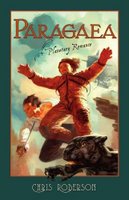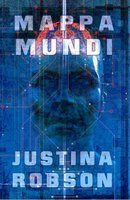Science Fiction Gets Global with Two Novels of 21st Century India
FOR IMMEDIATE RELEASE
September 13, 2006
CONTACT: Jill Maxick
800-853-7545 or jmaxick@prometheusbooks.com
Amherst, New York—Science fiction authors have always been a forward-thinking group, so it shouldn’t be any surprise that they are turning their attentions to addressing the technological rise of the nation of India. Now, Pyr, the SF&F imprint from Prometheus Books, has published not one but two novels set in this emerging superpower.
Ian McDonald’s Clarke- and Hugo-nominated River of Gods, published March 2006, has been hailed as “a major achievement from a writer who is becoming one of the best SF novelists of our time” (Washington Post, May 28, 2006). Set in the year 2047, on the one hundredth anniversary of the birth of a nation, River of Gods teems with the life of a country choked with peoples and cultures—one and a half billion people, twelve semi-independent nations, nine million gods. McDonald’s novel, like the best of speculative fiction, projects the India of today forward to the middle of the 21st century, to a time when artificial intelligences of almost godlike capabilities exist amid a country still torn between ancient superstitions and fantastic technologies.
As for his reasons for setting his science fiction in South Asia, McDonald says, “Sometimes you just stand up like a meerkat and see where the future is coming from. In this case: one billion English-speaking people, the world’s biggest democracy, education education education, a vibrant enterprise culture and six thousand years of history . . . Jai Hindustan!”
Best-selling author Alan Dean Foster brings his vision to bear on an even-nearer future. With its subtitle “A novel of Near-Future India,” Sagramanda (to be published October 3, 2006) presents a fast-paced and gripping techno-thriller set in an India just around the corner from today. Foster imagines the fictional city of Sagramanda, city of 100 million—this is the story of Taneer, a scientist who has absconded with his multinational corporation’s secret project code and who is now on the run from both the company and his father. Sure to appeal to both SF fans and mystery/suspense enthusiasts, Sagramanda has been described as an “unpredictable thriller, whose multiple threads Foster juggles like the professional he is” (Publishers Weekly, August 21, 2006).
“One sixth of humanity lives in India and the other five-sixths hardly know anything about it,” says Foster. “I thought people should. They’d better.”
Science Fiction Gets Global with Two Novels of 21st Century India Read More »











